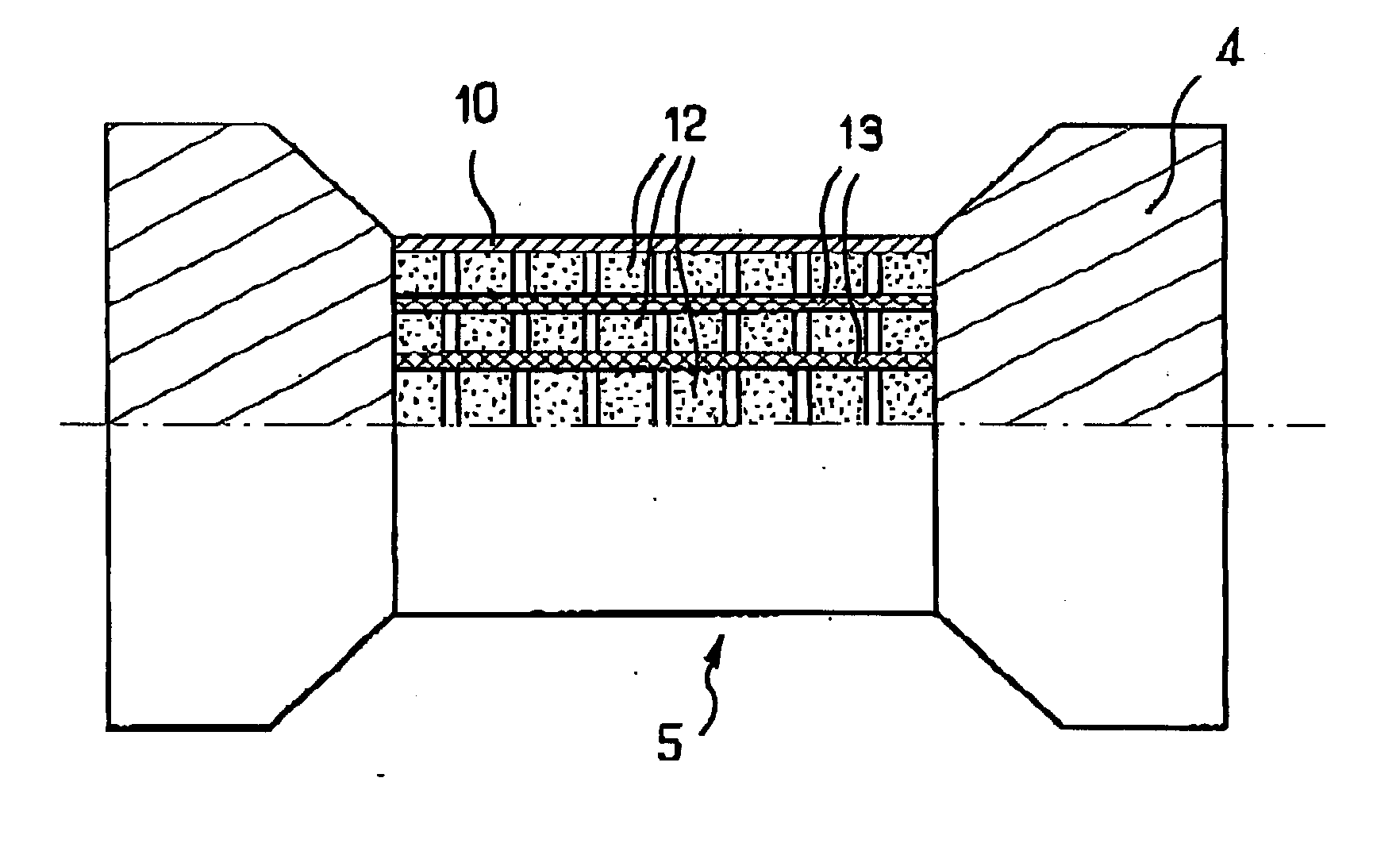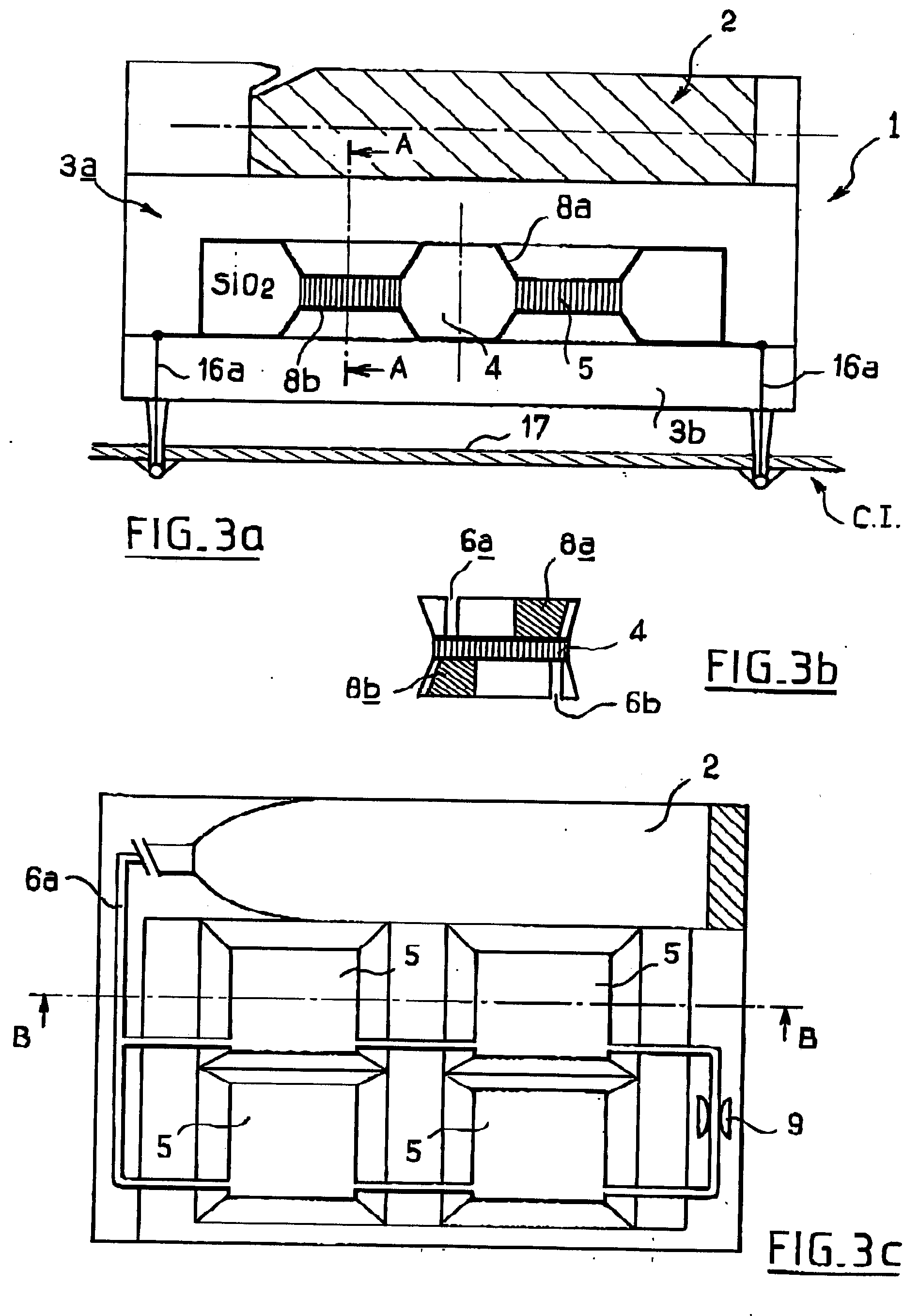Microfuel cells for use particularly in portable electronic devices and telecommunications devices
a technology of microfuel cells and electronic devices, which is applied in the direction of cell components, final product manufacturing, sustainable manufacturing/processing, etc., can solve the problems of cumbersome battery recharge, short battery life, and difficulty in finding electrical plugs
- Summary
- Abstract
- Description
- Claims
- Application Information
AI Technical Summary
Benefits of technology
Problems solved by technology
Method used
Image
Examples
example 1
[0087] Silicon microporous material is impregnated with Nafion.RTM. 117. One 10 .mu.L drop of Nafion.RTM. perfluorinated ion-exchange resin at 5 wt % solution in a mixture of lower aliphatic alcohols and water is placed on the silicon microporous material so that it wets the inside space of the microporous material by capillary action. Drying is done under controlled atmosphere at 20.degree. C. and 90% relative humidity. This procedure is repeated on the other surface. The microporous material is then treated with hot 3 mol.L.sup.-1 nitric acid over a period of 2 hours then washed in distilled water over a period of two days by means of a Soxhlet. At 25.degree. C. and under 90% relative humidity, a conductivity of 30 mS / cm is obtained.
example 2
[0088] Silicon microporous material is impregnated with Nafion.RTM. 117. One 10 .mu.L drop of Nafion.RTM. perfluorinated ion-exchange resin at 20 wt % solution in a mixture of lower aliphatic alcohols and water is placed on the silicon microporous material so that it wets the inside space of the microporous material by capillary action. Drying is done under controlled atmosphere at 20.degree. C. and 90% relative humidity. The microporous material is then placed in hot 3 mol.L.sup.-1 nitric acid over a period of 2 hours then washed in distilled water over a period of two days by means of a Soxhlet.
[0089] The filling of the porosity with a polyelectrolyte having an aromatic main chain such as polysulfones, polyether sulfones, polyether-ether-ketone, polyphenylene oxide, polyphenylene sulfide, ionic group carriers, sulfonic, phosphonic, carboxylic is also possible. The polyelectrolytes can comprise only one of these functional groups or can combine a plurality of these functional group...
example 3
[0090] 2 g of Udel 3500 @ polysulfone are dissolved in 20 ml of dichloroethane. Trimethylsilylchlorosulfonate is added so as to obtain an exchange capacity of 1.8 moles of protons / kg. After precipitation in ethanol, the polyelectrolyte is dissolved in a 4 / 1 mixture of dichloroethane and isopropanol. Solutions of sulfonated polysulfones are introduced into the porosity of the silicon by capillary action using one 10 .mu.L drop on the surface of the microporous material. The polysulfones used have a sulfonation rate of 1.6 to 1.9 protons per kilogram. After introduction of the polysulfone, conductivities varying between 20 and 70 mS / cm were obtained depending on the sulfonation rate.
[0091] The sulphonation can also be done after the introduction of the polymer in the channels. The filling of the porosity can be done on the basis of a polymer having an aromatic main chain such as polysulfone, polyether sulfone, polyether-ether-ketone, polyphenylene oxide, polyphenylene sulfide. After f...
PUM
| Property | Measurement | Unit |
|---|---|---|
| Fraction | aaaaa | aaaaa |
| Fraction | aaaaa | aaaaa |
| Thickness | aaaaa | aaaaa |
Abstract
Description
Claims
Application Information
 Login to View More
Login to View More - R&D
- Intellectual Property
- Life Sciences
- Materials
- Tech Scout
- Unparalleled Data Quality
- Higher Quality Content
- 60% Fewer Hallucinations
Browse by: Latest US Patents, China's latest patents, Technical Efficacy Thesaurus, Application Domain, Technology Topic, Popular Technical Reports.
© 2025 PatSnap. All rights reserved.Legal|Privacy policy|Modern Slavery Act Transparency Statement|Sitemap|About US| Contact US: help@patsnap.com



